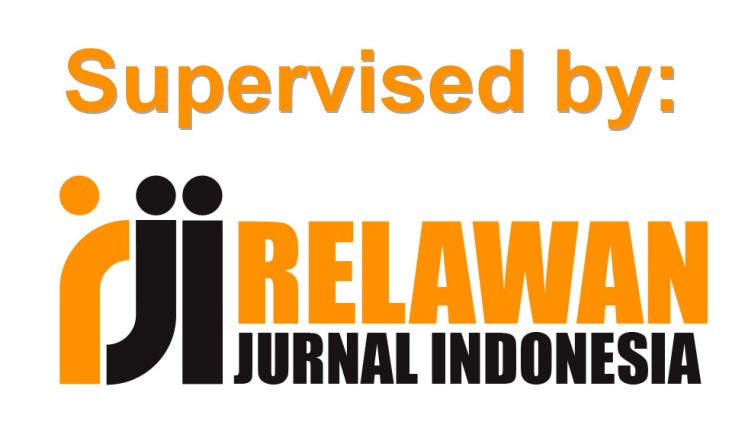IMPLEMENTASI ALGORITMA K-NEAREST NEIGHBOR UNTUK IDENTIFIKASI KUALITAS AIR (STUDI KASUS : PDAM KOTA SURAKARTA)
Abstract
Water quality in urban areas in Surakarta has decreased nowadays. The increase of industrial development, its poor sewage treatment, and some other factors cause this urban problem. The result of the water quality monitoring system with K-Nearest Neighbor algorithm on this research certainly will help the laborers’ duty of PDAM (Local Government Owned Water Utilities) in analyzing water quality. For the consideration of majority output in this method, the system works by taking the nearest distance to the assigned number of K. The training data for this research was taken in March 2016 form the report of water monitoring result in PDAM’S laboratory of Surakarta. The identification result is divided into eligible (MS) and ineligible (TMS). The testing data result is applied in algorithm performance testing with confusion matrix having accuracy level 82,5%.
Keywords: water quality, K-Nearest Neighbor, Confusion matrix
Full Text:
PDFReferences
A. St-Hilaire, T. B. M. J. Ouarda, Z. Bargaoui, A. Daigle, and L. Bilodeau, “Daily river water temperature forecast model with a k-nearest neighbour approach,” Hydrol. Process., vol. 26, no. 9, pp. 1302–1310, 2012.
K. Liu, Z. Li, C. Yao, J. Chen, K. Zhang, and M. Saifullah, “Coupling the k-nearest neighbor procedure with the Kalman filter for real-time updating of the hydraulic model in flood forecasting,” Int. J. Sediment Res., vol. 31, no. 2, pp. 149–158, 2016.
H.-I. Eum, S. P. Simonovic, and Y.-O. Kim, “Climate Change Impact Assessment Using K-Nearest Neighbor Weather Generator: Case Study of the Nakdong River Basin in Korea,” J. Hydrol. Eng., vol. 15, no. 10, pp. 772–785, 2010.
R. I. Ndaumanu and M. R. Arief, “Analisis Prediksi Tingkat Pengunduran Diri Mahasiswa dengan Metode K-Nearest Neighbor,” JISATI, vol. 1, no. 1, pp. 1–15, 2014.
E. M. Elnahrawy, “Log-Based Chat Room Monitoring Using Text Categorization : A Comparative Study,” IASTED Int. Conf. Inf. Knowl. Shar. (IKS 2002), 2002.
G. Toker and Ö. Kırmemiş, “Text Categorization Using k-Nearest Neighbor Classification,” Middle East Tech. Univ., 2013.
Y. Liao and V. R. Vemuri, “Using Text Categorization Techniques for Intrusion Detection,” Proc. 11 th USENIX Secur. Symp., 2002.
F. Bajramovic, F. Mattern, N. Butko, and J. Denzler, “A comparison of nearest neighbor search algorithms for generic object recognition,” Adv. Concepts Intell. Vis. Syst., pp. 1186–1197, 2006.
A. . Rosa and A. Shalahuddin, Modul Pembelajaran Perangkat Lunak (Terstruktur dan Berorientasi Objek). Bandung: Modula, 2011.
T. Cover and P. Hart, “Nearest neighbor pattern classification,” IEEE Trans. Inf. Theory, vol. 13, no. 1, pp. 21–27, Jan. 1967.
M. Bramer, Principles of Data Mining, no. January 2007. London: Springer London, 2007.
K. Michelin, P. Jian, and H. Jiawei, “Data Mining: Concepts and Techniques,” vol. 278, pp. 6093–6100, 2003.
DOI: http://dx.doi.org/10.30646/tikomsin.v6i1.345
Refbacks
- There are currently no refbacks.
Editorial Office :
TIKomSiN : Jurnal Teknologi Informasi dan Komunikasi Sinar Nusantara
Published by STMIK Sinar Nusantara Surakarta
Address KH Samanhudi 84 - 86 Street, Laweyan Surakarta, Central Java, Indonesia
Postal Code: 57142, Phone & Fax: +62 271 716 500
Website: https://p3m.sinus.ac.id/jurnal/index.php/TIKomSiN
Email: tikomsin @ sinus.ac.id

This work is licensed under a Creative Commons Attribution-NonCommercial-ShareAlike 4.0 International License.










